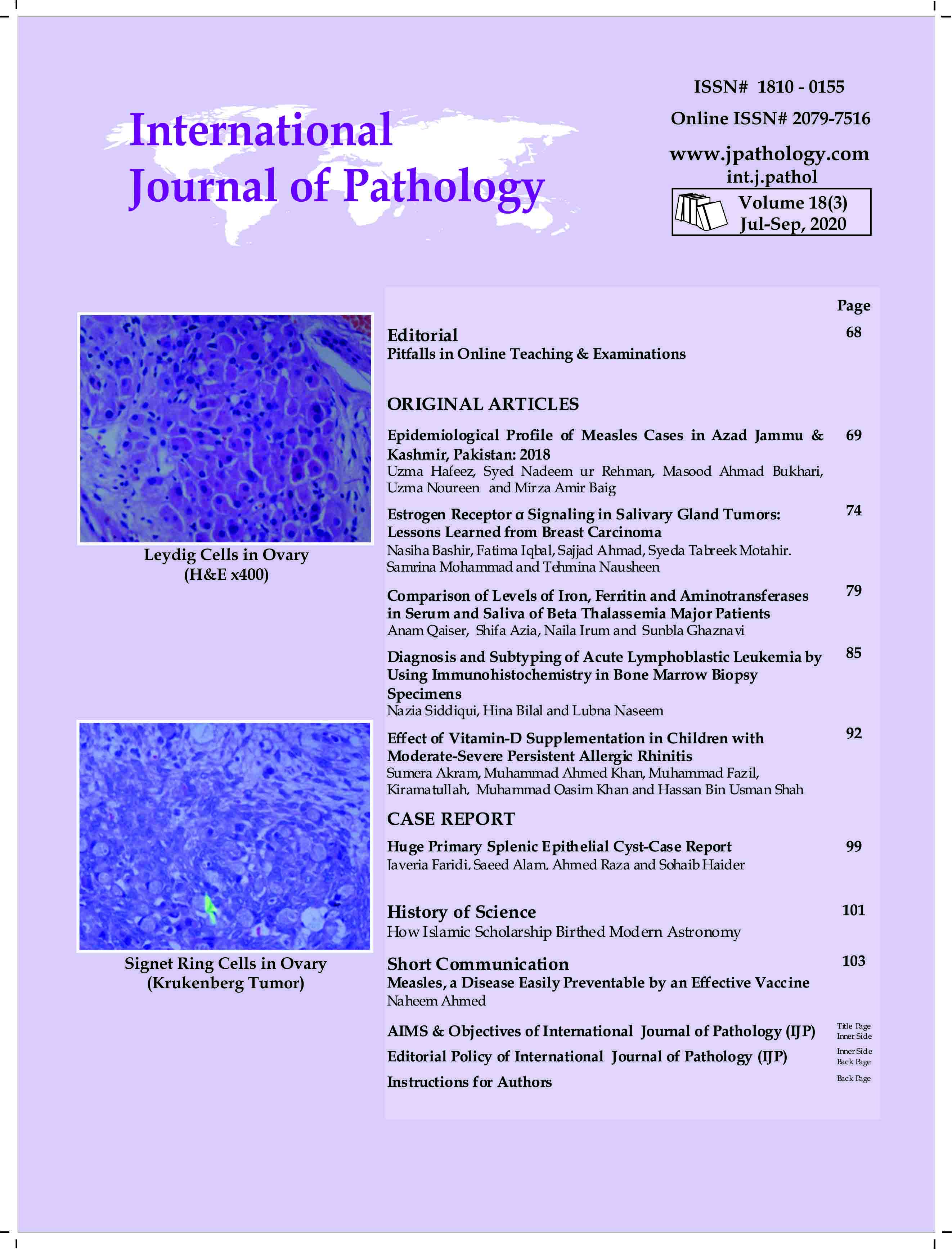Diagnosis and Subtyping of Acute Lymphoblastic Leukemia by Using Immunohistochemistry in Bone Marrow Biopsy Specimens
Keywords:
Acute lymphoblastic leukemia (ALL), Immunohistochemistry (IHC)Abstract
Background: Acute lymphoblastic Leukemia (ALL) is a hematological malignancy characterized by neoplastic proliferation and accumulation of lymphoid precursors known as blasts. It has two types; B cell ALL and T cell ALL, depending on type of lymphoblast involved. We used selective panel of immunohistochemical (IHC) markers to confirm the diagnosis and lineage of ALL.
Objective: This study was carried out to see the utility of immunohistochemistry (IHC) for diagnosis and lineage confirmation of acute lymphoblastic leukemia (ALL) with minimum selected panel of IHC markers and to know the pattern of B and T cell ALL among the patients referred to our department.
Methodology: It was a prospective descriptive study conducted at the pathology department of Pakistan Institute of Medical Sciences (P.I.M.S). Fifty-six suspected and untreated cases of ALL of both genders and all ages were included in the study. The panel of IHC markers used to confirm both B and T cell ALL were TdT, for B cell ALL CD10, CD20, CD 79a and for T cell ALL CD3 was used. The data was entered and analyzed in SPSS version 20.
Results: Out of total 56 patients of ALL, 43 (77%) patients had B cell ALL, 10 (18%) patients had T cell ALL. On IHC two (3%) patients had biphenotypic and 1 (2%) patient had Burkitt Leukemia. The age range was from 9 months to 69 years and peak age group was 6-10 years. Overall male to female ratio was 1.5:1. FAB type ALL-L2 was most common type in all age groups. There was male predominance in both B and T cell ALL, but this difference was more marked in T cell type with male to female ratio 4:1.CD 10, CD 20 and CD 79a are more helpful markers in B cell ALL. For T cell ALL CD 3 is the highly specific and sensitive marker. Conclusion: Based on our results, we came to this conclusion that IHC is a good and reliable method for immunophenotyping to diagnose and subtype ALL with limited resources and in conditions when paraffin embedded trephine biopsy is the only material available for diagnosis.
Downloads
Published
Issue
Section
License
Copyright (c) 2021 Nazia Siddiqui; Hina Bilal, Lubna Naseem

This work is licensed under a Creative Commons Attribution-NonCommercial 4.0 International License.
Readers may “Share-copy and redistribute the material in any medium or format” and “Adapt-remix, transform, and build upon the material”. The readers must give appropriate credit to the source of the material and indicate if changes were made to the material. Readers may not use the material for commercial purpose. The readers may not apply legal terms or technological measures that legally restrict others from doing anything the license permits.


